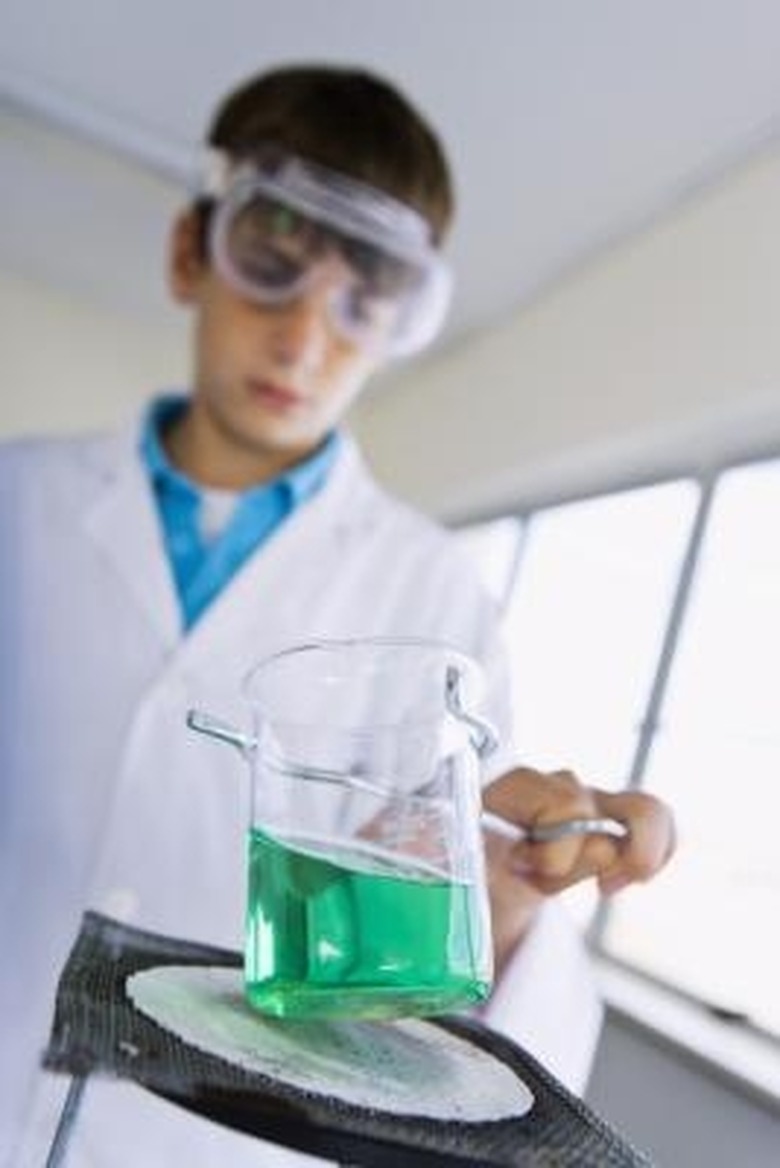How To Activate Molecular Sieves
Chemists frequently use drying agents to remove water or other contaminants from solvents. Molecular sieves are one of the most effective drying agents. They consist of aluminum, silicon, oxygen and other atoms arranged in a three-dimensional network with open channels; the size of the channels varies depending on the exact ratio of aluminum and silicon. Manufacturers designate the most common channel sizes as 3A, 4A, 5A or 10A, where the number represents the approximate size of the channels in angstroms. Before a scientist can use molecular sieves as a drying agent, she must "activate" them by removing all traces of water and other volatile compounds. Normally, this involves heating the sieves to 300 to 320 degrees Celsius (572 to 608 degrees Fahrenheit) for about 15 hours.
Step 1
Place the molecular sieves in a large, heat-resistant beaker or ceramic bowl. Use the largest beaker or bowl that will fit inside the laboratory-grade oven.
Step 2
Place the beaker or bowl inside the oven.
Step 3
Heat the molecular sieves at 300 to 320 degrees Celsius for at least 15 hours. Heating for longer periods is unnecessary, but will not damage the molecular sieves.
Step 4
Remove the molecular sieves from the oven using heat-resistant gloves. If possible, place the molecular sieves in a desiccator to cool. Otherwise, allow the beaker to cool in the open air until it's warm to the touch, and then transfer the molecular sieves to an airtight container and cap tightly.
Things Needed
- Heat-resistant beaker or ceramic bowl
- Laboratory-grade oven
- Heat-resistant gloves
- Desiccator (optional)
- Airtight glass container
- Dust mask
Warning
The dust from molecular sieves can irritate the upper respiratory tract. Use a dust mask when handling molecular sieves.
Cite This Article
MLA
Brubaker, Jack. "How To Activate Molecular Sieves" sciencing.com, https://www.sciencing.com/activate-molecular-sieves-7575897/. 24 April 2017.
APA
Brubaker, Jack. (2017, April 24). How To Activate Molecular Sieves. sciencing.com. Retrieved from https://www.sciencing.com/activate-molecular-sieves-7575897/
Chicago
Brubaker, Jack. How To Activate Molecular Sieves last modified August 30, 2022. https://www.sciencing.com/activate-molecular-sieves-7575897/
